The Rise of the Rest

AOL co-founder Steve Case speaks candidly about why regional innovation hubs are crucial to solving the world’s greatest challenges — and what he’s trying to do about it.
If you’re trying to get Steve Case to take a look at your business, your address better not be Silicon Valley.
Co-founder and leader of AOL — the largest online service ever created and one of the early pioneers of the internet — Case helped drive the global adoption of a technology that transformed lives. AOL was the first internet company to go public and one of the best-performing stocks of all time, with a 11,616% return to shareholders in the 1990s. At its peak, nearly half of Internet users in the United States used AOL. In 2000, Case negotiated the largest merger in business history when AOL purchased Time Warner and Case stepped down as CEO.
By all accounts, Case should be sunning on an island (that he owns) sipping umbrella drinks. Instead, he’s helping America find her entrepreneurial mojo again.
Over the last 15 years, Case has been creating and scaling Revolution, a Washington D.C.-based investment firm that backs entrepreneurs from across the country at every stage of their development. Revolution finds transformative businesses in unexpected places through its Rise of the Rest initiative, a nationwide platform shining a light on new regional startup hubs. Since 2014, Case and the Revolution team have traveled more than 11,000 miles to 43 cities on the Rise of the Rest bus to visit entrepreneurial ecosystems and elevate exciting new ventures. Hitting a new city each day, Case meets with everyone from politicians to founders. At the end of a five-day tour, Revolution hosts a pitch competition where it invests $100,000 in a local startup.
Revolution launched a $150-million Rise of the Rest Seed Fund in 2017 and a second one in 2019. There’s renewed excitement building around the tours and the success of Case’s recently released book, Rise of the Rest: How Entrepreneurs in Surprising Places are Building the New American Dream. The funds are backed by people like Jeff Bezos, Ray Dalio, Sara Blakely, Henry Kravis, Eric Schmidt, Tory Burch, and John Doerr. To date, the Rise of the Rest Seed Fund has invested in over 200 companies in more than 100 cities.
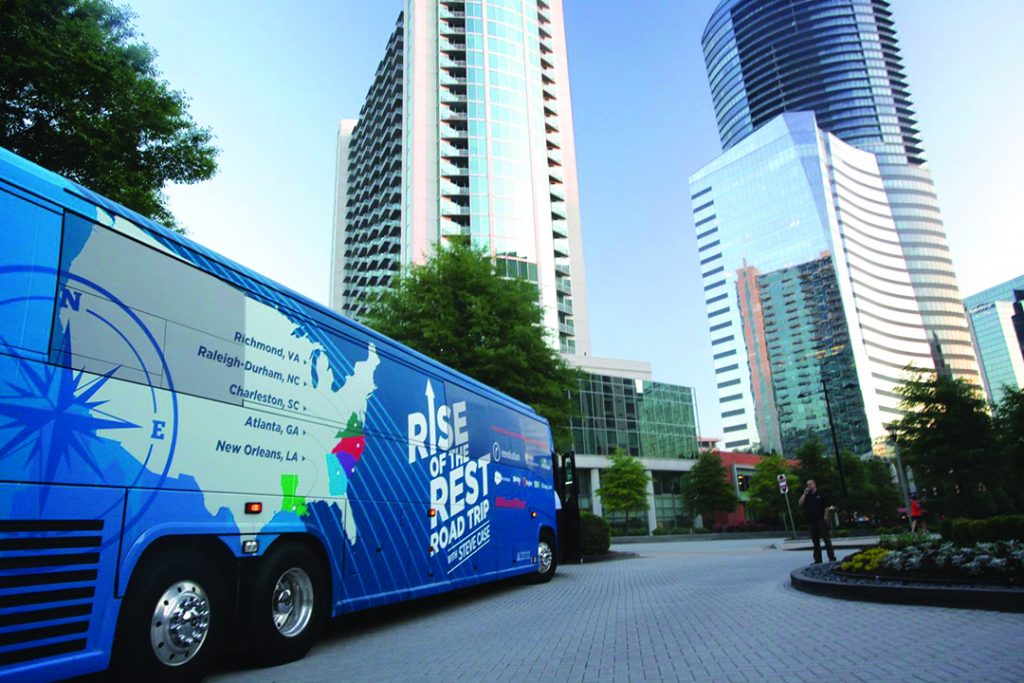
Why is fostering entrepreneurship so important for our country right now?
Case: It’s so important because we need to create jobs and opportunity and hope, frankly, all across the country. A lot of people in a lot of places are feeling left out, left behind, and anxious about the future. Right now, our nation is divided. One way to cut that divide is to find people in unexpected places who are doing really well building a local innovation economy and are excited about the future. With our bus tours, we’ve visited nearly 50 cities. Many of these cities are trying to reimagine what they can be. They are trying to not just think about the past but think about the future. Innovation startups, job creation, and economic growth are a key part of their strategy. This is our way to support and champion what’s happening in these different cities.
But it’s more than just touring and celebrating entrepreneurship.
Case: Yes, there is a more fundamental goal of backing the next generation of entrepreneurs who are building companies trying to transform important aspects of our lives, trying to reimagine healthcare, food, financial services, education, things like that, and create better solutions and processes — these are truly great companies.
What inspired you to take this on?
Case: It was a little bit random. I started Revolution as an investment firm after I stepped down as CEO of AOL, which was over 20 years ago. But it was a little over 10 years ago when we really doubled down on the idea of regional entrepreneurship.
It was troubling to me that 75% of venture capital was going to three states — California, New York, and Massachusetts — and the other 47 states were struggling and fighting over the remaining 25%. People felt like they had to leave where they were to go to some place like Silicon Valley, and that created a brain drain in many parts of the country. So we identified that as an investment strategy that we thought was differentiated by identifying promising companies in places where most venture capitalists weren’t looking. We thought we’d be able to generate strong investment returns by also having a positive impact on those companies and those communities, and more broadly, on the country.
I was asked to co-chair the National Advisory Council on Innovation and Entrepreneurship probably 12 or 13 years ago, and that led to launching a White House initiative called Startup America that (former) President (Barack) Obama asked me to chair. We traveled the country and worked on jobs legislation, and the Jobs Act passed about 10 years ago. And then that experience led to the launch of the Rise of the Rest bus tours almost nine years ago.
But as I reflect on it, I think the broader backstory is about my growing up in Hawaii, which is outside the mainstream. It wasn’t even a state when I was born. I started AOL in northern Virginia, in a city where there was no venture capital, so we had to raise money from other places. And the struggle of starting and scaling AOL in a place where there wasn’t a strong startup ethos and community gave me a certain empathy for entrepreneurs in other random places. And that led to wanting to champion their stories.
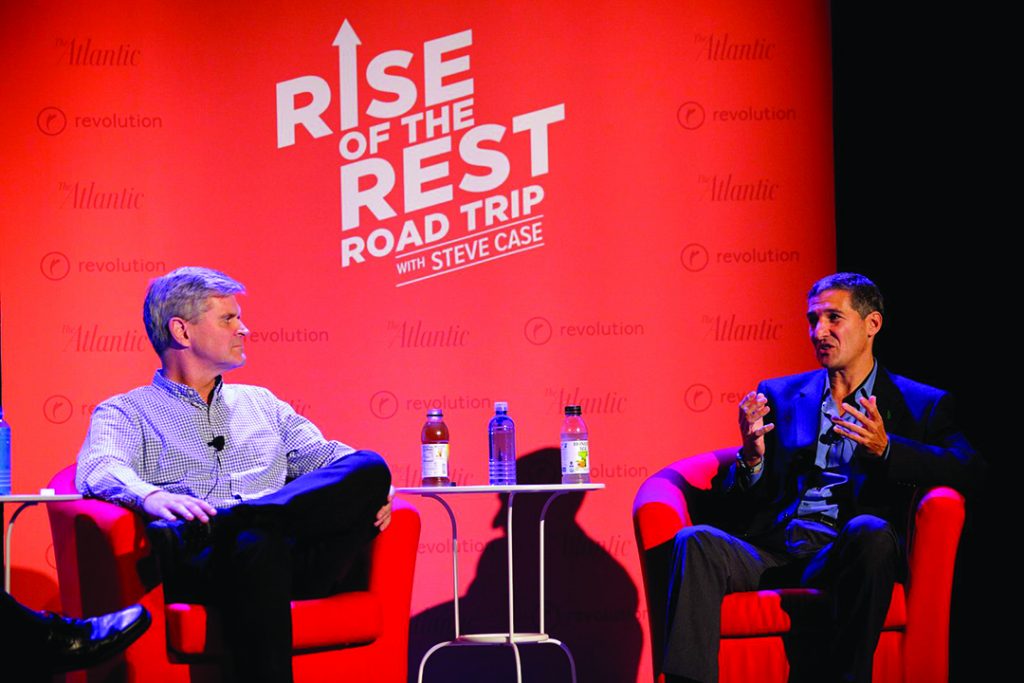
You’ve seen so many communities on your bus tours over the years. Is there one that has really intrigued or surprised you?
Case: I’ve always kind of avoided the question of which cities are most interesting because we have been in so many … it’s a little bit like asking a parent who’s your favorite child. We’re really trying to be supportive of all these different cities. That said, there are some interesting cities profiled in the book that are surprising to people. And they’re usually surprising in part because most people have no idea how much innovation is happening right where they are.
Nearly 10 years ago, the first stop of our bus tour was Detroit, which was really the most innovative city in America with the car revolution, but then fell on hard times and lost about 60% of its population and went bankrupt the year before we came with our bus. But now, the city has had a resurgence with really great companies like Shinola and StockX and others that are showing real momentum. I like that kind of story — the rise and fall and rise again. It’s intriguing.
And there are others that have been surprising, like Baltimore. Most people don’t know that Johns Hopkins and Under Armour are headquartered there, and that there are exciting things bubbling in Baltimore, particularly around health tech. Most people don’t know in Chattanooga, for example, there’s a company called FreightWaves working with the trucking industry to build a data platform for trucking, and that came about partly because a bunch of the big trucking companies are headquartered in Chattanooga. We’re seeing other cities like Atlanta rise up thanks to companies with noteworthy success like Mailchimp. Most people wouldn’t think that one of the leading health tech companies in the country is based in Madison, Wisconsin, and has 10,000 employees — but Epic Systems made a point to build a campus in Verona, Wisconsin, just outside the city.
So, it’s not just one or two cities that are rising. And it is really intriguing to see how each of these cities has developed over the last decade and how there’s now a broader discussion, including a growing national discussion, about the importance of regional entrepreneurs. Last summer, Congress passed with bipartisan support the CHIPS (Creating Helpful Incentives to Produce Semiconductors) and Science Act, which, among other things, allocated $10 billion to regional hubs. The idea of building innovation ecosystems has gone from a fringy one 10 years ago when we first hit the road to now being much more mainstream. Governors are focusing on it, big companies are looking to partner with the smaller companies, and universities are looking to incentivize innovation on their campuses and build a network around their institution. It’s been really encouraging to see.
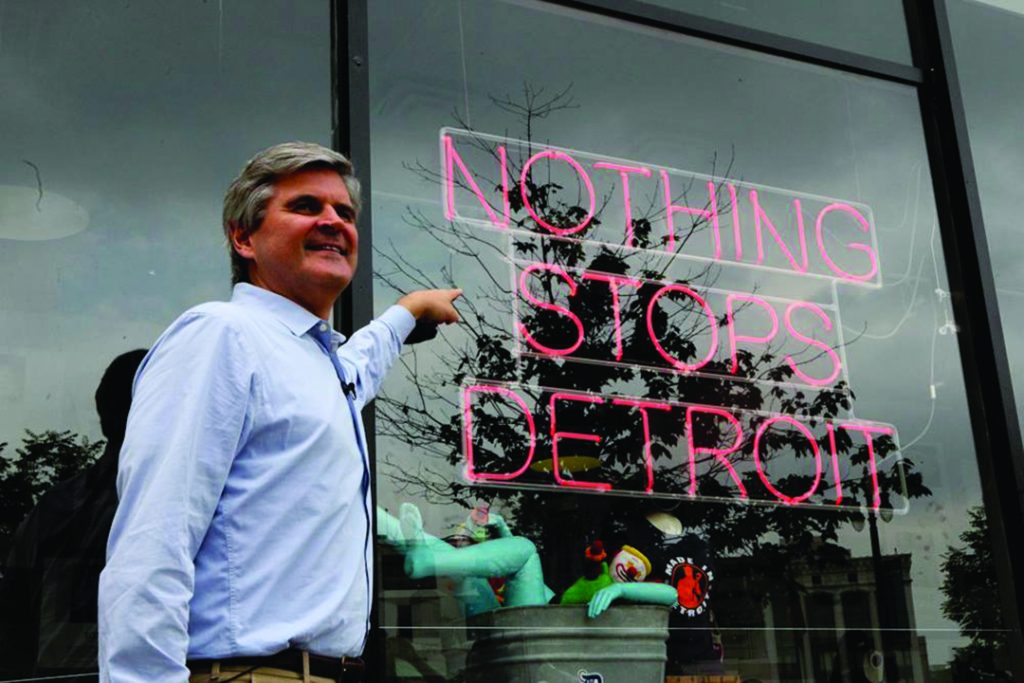
Have you seen any emerging trends in social impact businesses?
Case: Yes, companies like Salt Lake City-based Cotopaxi, which is a company focused on athletic wear but with a deep social mission. (Read Real Leaders’ story on Cotopaxi’s transfer of leadership on page 52.) And Dallas-based Kanarys, which focuses on diversity, equity, and inclusion by working with companies to put DEI metrics in place and track their progress against them. And Chicago-based Rheaply, a winner of one of our pitch competitions,
which focuses on the circular economy by making sure products in universities and other large-scale organizations don’t get just thrown away or put on the sidelines when somebody else or some other organization can reuse it. And then there’s the winner of our pitch competition in Indianapolis, a company called 120Water, which is a digital water company with an enterprise solution that helps public health officials manage the quality and safety of their water. The City of San Francisco is one of their customers. These are all examples of entrepreneurs who saw a problem in the world and asked, “How do you build a successful, valuable business but at the same time have a significant impact in the world?” It’s about solving a big problem through the prism of entrepreneurship.
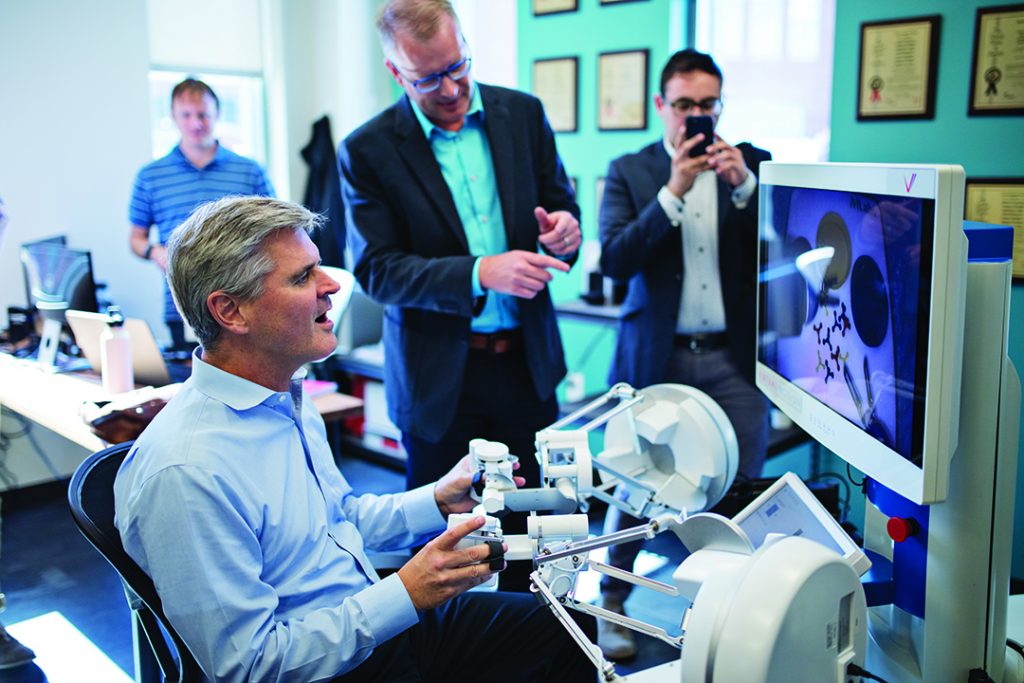
How has this tour impacted you as an entrepreneur and as a leader?
Case: We recently hosted a Rise of the Rest CEO Summit in Arizona with about 60 to 70 CEOs from all around the country. Hearing their stories and watching how they’re building these companies despite the challenges brought about by COVID-19 and funding over the last few years was so inspiring. They just believe in their ideas. They believe in their teams. They’re saying, “We’re going to win this one, and we’re going to build a company that can be valuable but also have a positive impact.” I have been personally impacted — by just spending time with these entrepreneurs hearing their stories, understanding some of their challenges and frustrations, but also having a sense of their hopes and dreams.
Having spent the better part of the decade traveling around the country — visiting dozens of cities and states, seeing firsthand how each of these communities are coming together to build a better future and support entrepreneurs — has been so inspirational. Seeing how neighborhoods are being reimagined and rebuilt because of innovation gives me an optimistic view of this next chapter for America.
You mentioned earlier about our country being divided. Can you expand on that?
Case: The struggles that divide us lie in our politics. There’s a lot of reason to be concerned about global competition with China and others. We’ve been kind of naive about the challenges and risks we face as a country. But it’s hard not to be optimistic when you get out there meeting people where they are in their communities and see what they’re doing. And it’s not just the entrepreneurs — it’s also other people in the community who are saying, “This is our moment. This is our time. We’re going to embrace it. We’re going to build a better future for people in our community and do something that can create a more inclusive innovation economy for the whole country.”
I think that is the next chapter. We can win the battle with China and others by focusing on the industries of the future, the technology, including AI and robotics. We can continue to be the most innovative entrepreneurial nation in the world. But we have to do it in a more inclusive way. We have to do it in a way that more people in more places feel included.
About six or seven years ago, Pew (Research Center) did a study, and one of the statistics has always troubled me. As I recall, 70% of Americans wake up in the morning anxious and fearful about the future. That’s a problem. We need to create a dynamic where more people can be optimistic about the future. And that’s one of the important roles that entrepreneurs play, by creating that sense of hope in new opportunities, new jobs. I saw this when building AOL. It wasn’t just about what we did within our company. It was the broader ripple effect in the community in terms of new homes and schools being built, new restaurants opening, and so forth. And so, these entrepreneurs are playing an important role by not only reimagining industries, but by revitalizing communities and strengthening our country.
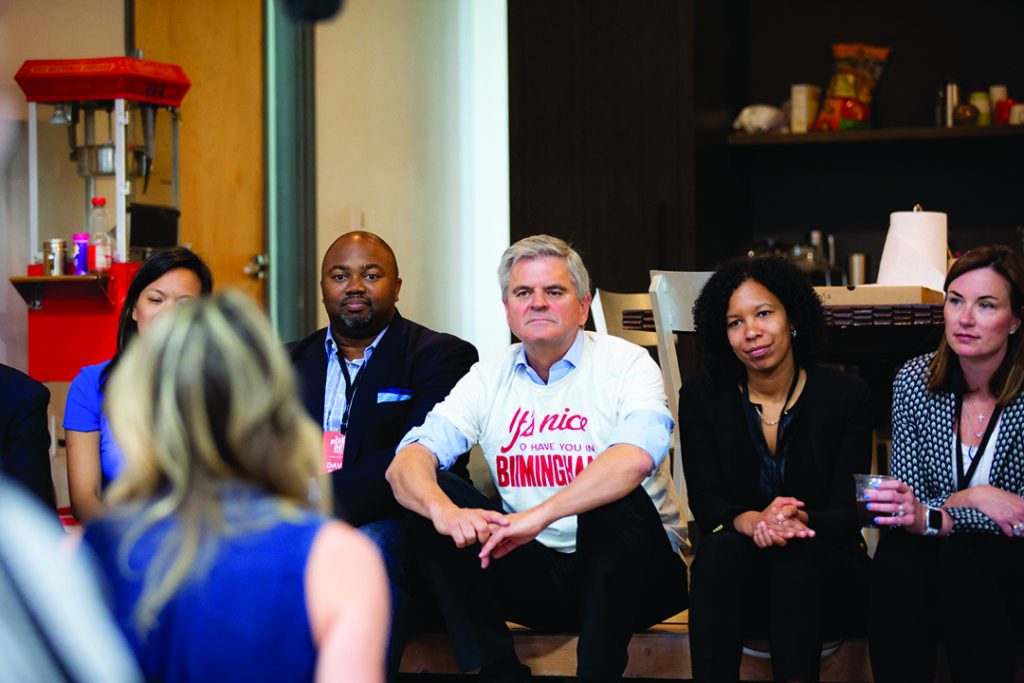
When you think about these entrepreneurs and communities that you’ve gotten to know through the bus tours, is there anything about them collectively that worries you?
Case: What worries me is that it’s still harder for entrepreneurs in these cities to start and scale. It’s still harder for them to raise capital. It’s still harder for them to build teams. It’s still harder for them to attract media attention or attract the attention of potential partners. I recognize that it’s easier than it was; on the capital front, 1,400 new venture firms have started up in Rise of the Rest cities, so that’s encouraging. After decades of brain drain, we’re seeing a boomerang of some people returning to their hometowns to build their companies. We are seeing more tentpole company successes in these cities, which inspires others to start or back companies. But it’s still a challenge, and it’s always going to be a challenge for entrepreneurs. We need to keep trying to make it easier for the next generation of entrepreneurs in cities all across the country to build companies and really pursue the American dream.
What key ingredients do you look for in a startup?
Case: We have three fund families at Revolution. We have a very early-stage seed strategy, which is focused on the Rise of the Rest cities. We also have a venture strategy fund and a later-stage growth strategy fund investing in companies when they’re more fully developed before they go public. So, we’re looking for different things at different stages.
If it’s still the very early days in terms of the business, we look at the idea and the team they’ve assembled. Do they have a solid hypothesis in terms of what’s going to change the world and a strategy or some unique differentiated technology or some new approach or business model? Does their team have the skill sets necessary for that particular company and that particular industry?
As a company scales up, we look at how the product fits the market and if the revenue is starting to grow. Then even later, in the growth stage, we look at how big a business can be. With the right team and the right kind of capital structure, does it have the potential to be a much more significant and durable business?
But truly, it all comes down to the entrepreneurs and the ideas and how they are focusing on problems that need to be solved that could unlock big opportunities to build significant companies. Are they marrying the vision of what they want to build with a focus on the execution? Can they actually be successful?
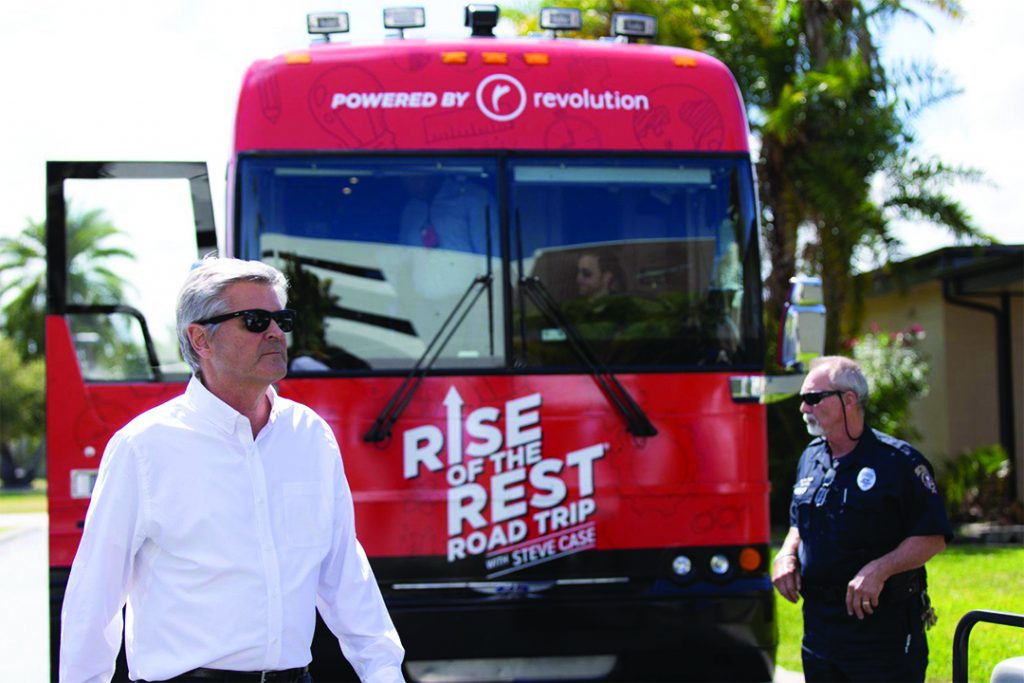
How do you feel about remote work and its impact on innovation?
Case: It’s been a big positive for Rise of the Rest because many people felt like they had to be in a place like Silicon Valley, but now they realize they have more choice, more flexibility in terms of where they live and how they work. It’s also been helpful to the companies in these rising cities that are growing and need access to more specialized talent, people who’ve experienced that kind of hyper-growth. They’re now able to tap into some of that talent without requiring them to move to their city.
There’s no putting the genie back in the bottle. We’re living in a world where we’re not going to return to what we used to think was normal. We’re not going to be in offices five days a week. Some companies that we back are remote-only companies and organize their culture around that, and we’ve seen a number of successes there. At the same time, I do think there’s value in being together. The energy in the room, the connections people make, and the side discussions people have lead to important insights. I remember in the early days at AOL, we had Friday afternoon get-togethers, and it was super helpful for me to have a sense of what people were talking about and what issues were bubbling below the surface that might not have gotten to my desk otherwise.
We’re in this new mode — which can be frustrating to some but also exciting on another level — where we’re reimagining work and how things can get done. It’s going to take a few years to figure out the right models. I remember visiting a company in Fayetteville, Arkansas, that had a nice office in a nice walkable downtown area. People liked being in the office five days a week. We also have companies that were launched during the pandemic and have always been, and always intend to be, fully remote. We have a lot of companies that are in the middle with some kind of hybrid strategy. So, it’s a grand social experiment, and it’s going to be interesting to see over the next five or 10 years how it plays out.
What kind of help do America’s entrepreneurs need most — money or mentoring?
Case: It’s both. Most entrepreneurs don’t have money and don’t know people who have money. They have a great idea, but it’s hard for them to imagine starting a company unless they have access to initial seed capital or can raise the next round of capital to start expanding. A second challenge is building a team and assembling the talent. The third is that they tend to be isolated and don’t really have that collaborative environment. That is one of the strengths of Silicon Valley, that network density where people are working together closely — even walking around in town or stopping to get coffee, there’s somebody else they can relate to. Most people in the rising cities don’t really have that dynamic. It’s a huge benefit to get together with likeminded people who can collaborate and learn from each other, and that’s missing in some of these communities.
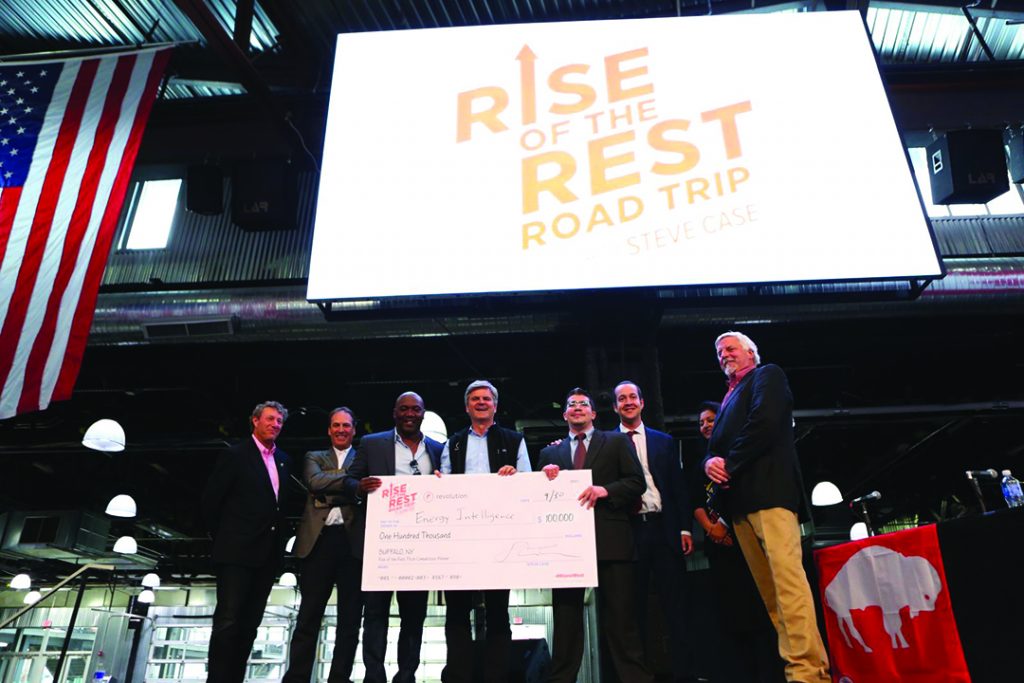
What role do local and national governments play in helping entrepreneurs?
Case: In this next phase of innovation, policy matters. We have to spend more time on policy. We need a national entrepreneurship strategy. New technologies like AI and robotics have a lot of promise but also carry a lot of risks that need oversight. As we think about a more inclusive innovation economy with more regional hubs, we have to figure out ways for the government to play a constructive role at both a national and local level. We need policies that make it easier for these companies to scale anywhere in the country.
Maybe the most important thing is for governments and policymakers to believe in these entrepreneurs, believe in their ideas, believe in their teams, and be willing to cheer them on. There are many people who when they hear an idea from an entrepreneur, they go right to the risk factors, why it might fail. We need more people in more parts of the country to not just focus on what might go wrong, but focus on what might go right. If we have more people in more parts of the country doing that and bringing that kind of bias toward action and innovation, it will take us into the future.
What’s your most important message for entrepreneurs today?
Case: My message is: Now’s the time. If you see a problem you want to solve, now’s the time to do it. The future is being created now. The next 10 to 20 years are going to be exciting from a lot of different respects. If you want to jump into the fray and start a company, now’s the time to do it — that’s No. 1.
Number two, now you can do it anywhere. Don’t feel like you’re sitting in the middle of the country and because you’re not in Silicon Valley or in New York City or in Boston that you’re missing out and don’t really have a shot. You do have a shot. Recognize that there are things possible now that maybe weren’t possible before. And lastly, just recognize that in this new environment, it’s going to require more collaboration, more partnerships, more engagement on the policy level with governments. So, bring that different kind of mindset to it.
If you’re looking for a problem to solve, then look at health care. Health care needs to be reimagined because it’s a huge percentage of the country’s economy, but the outcomes aren’t as good as they should be. My message is: There are lots of opportunities up for grabs. Now is the time. Get to it.
Carla Kalogeridis is editor for Real Leaders.
Subscribe today and gain a strategic advantage from the emerging trends and best leadership practices found within Real Leaders magazine.



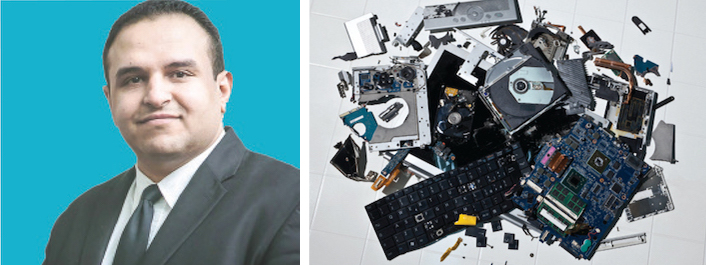
Responses